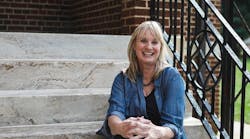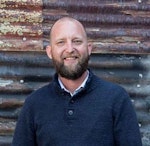Jane Rohde's Mission to Transform Senior Living and At-Risk Youth
One of Jane Rohde’s friends recently asked her how she makes money in the senior living marketplace. Her reply was somewhat unexpected: she doesn’t. “I make money in the consulting work that we do. That helps support the passion of trying to change the future,” she says.
Jane Rohde, AIA, FIIDA, ASID, ACHA, CHID, LEED AP BD+C, is the principal and founder of JSR Associates Inc., in Catonsville, MD. For decades, she’s been a champion of a widespread global cultural shift toward de-institutionalized senior living facilities. She does this through her consulting, research and advocacy, which provide services to non-profit and for-profit developers, government agencies, and care and senior living providers.
Rohde’s passion for change and producing a body of meaningful work is what fuels her practice — a trait she believes is essential to longevity and success in this industry. “You have to have a burn in your belly. If you don’t have a burn in your belly about something, you probably won’t stick with it,” she says. “You’ll falter or you’ll change; you’ll do it differently.”
Her business model has never centered around billable hours, but rather asking the question, “What do we really want to do with this project?” and then figuring out the financial side of the equation. Rohde’s concern is that architecture and design are too often treated as a commodity, which devalues the power they wield to affect change.
“There is a value to design that can support not just vulnerable populations but community development and community living, and I think that the design world has an important role to play there, but it’s been downplayed,” she observes.
Just as consolidation is happening across the healthcare industry, Rohde sees larger design firms buying smaller ones, which results in a sort of production-house mentality that reduces design to a product. “That makes me nervous because I don’t feel that people are really well served if we treat design like a commodity.”
Uncovering the Senior Living Gap — and Filling It
As with any good story, the protagonist’s journey isn’t linear. It unfolds over time. In Rohde’s case, an art teacher in the seventh grade told her, then 11, she wouldn’t come into her own until she was 30.To a child, that is like saying, “You won’t come into your own until you’re dead,” she recalls with a laugh.
Nevertheless, Rohde said the instructor taught her about perspective, drawing and sculpture. She credits him for her interest in architecture. Later, she took a class in mechanical drawing and another in interiors that taught her about space planning and design.
By the time Rohde reached college, she focused her thesis project on the Fuggerei, the world’s oldest social housing complex still in use within the German city of Augsburg. Founded by the Fugger family in 1516, Rohde was fascinated by this community that continues to function as a place where needy citizens can be housed — considered by many to be the first continuing care retirement community.
In 1988, Erickson Retirement Communities hired Rohde for her background in residential architecture with the intent of creating better living environments for residents. During the next eight years, she performed contract administration, launched a design and procurement department, and eventually developed standards for Continuing Care Retirement Communities (CCRC).
By the mid-90s, Erickson was undergoing significant changes, and Rohde realized it was time to part ways. “I saw a huge gap between operations and function and design and what they were providing,” she recalls.
At the completion of one project, in particular, Rohde came to the realization that, “This is not even close to what they need because no one talked to anyone in Operations, and no one talked to the residents, no one talked to the families. You could just so sorely see that that was the case,” she says. “The more we saw that and worked toward it, I realized there was this big gap. I started my practice not knowing other people didn’t know there was a gap. It’s always good to have a business model that’s premature,” she jokes.
As a result, she started JSR Associates in 1996 and grew the business through referrals as the doors of opportunity continued to open. She also credits the tremendous support she’s received from her father and mother through the years, as well as mentors and colleagues such as the late Joe Wnuk, Steven Spurlock, Wayne Ruga, Dr. Bill Thomas and Steve Lindsey.
Introducing the Live Together Community
Rohde has a soft spot for the underdog and those who don’t have a voice. Whether it’s a vulnerable population, the elderly, family members or children, “That is really what drives the ‘heart part’ of my business,” she says.
For her, the state of the continuing care retirement community and at-risk youth are of particular concern. Because the fact is a majority of the population can’t afford the kind of care they’ll need after retirement and many children who exit foster care have nowhere to go and often lack marketable skills.
Rohde suggests a wholesale reinvention of the existing long-term care and social service paradigm is needed to shift the focus back to where it belongs: on people.
As such, Rohde and company developed a concept called the Live Together Community. The premise behind the plan is to create an intergenerational model of life that would be co-located on an existing Children’s Home campus serving at-risk youth, evaluation of urban settings and opportunities to co-locate youth and elders, and on existing senior living campuses that want to embrace the community at-large. All provide an opportunity for young residents to become part of a “teaching and research” community focused on older adults receiving quality care and services.
“It’s a combination of looking at workforce development, at-risk youth as a vulnerable population and seniors, and seeing how they can interact together to create a revenue stream that would be [realized] through teaching and research. It allows a provider who wants to do culture change come and learn about it and see it in action,” she explains. “You could have frontline staff come and be trained. You could have designers and architects come and learn how to do functional programs.”
In other words, what Rohde envisions with the Live Together concept is a more human-centric and sustainable model of care for multigenerational populations and to create communities that are meaningful and better connected. But there’s much work still needed to move the needle toward positive change.
“It’s meaningful for me because the more adoption we can do, the better, because I think we can actually move things forward by eliminating and/or coming to consensus on some of the design guidelines that we have for long-term care,” she says.
Words Jane Rohde Lives By
When considering what advice to give to the next generation of designers, Rohde recalls Jim Cramer from Design Intelligence asking a group of designers what they would say if they wrote a letter to their previous selves. Rohde’s advice to herself and young professionals everywhere is: “Enjoy what you do and to be passionate about your work. Again, it’s that ‘burn in the belly,’” she says. “Be curious. Don’t just accept the status quo as being OK, because it probably isn’t.”
She also suggests young professionals continue to ask questions and pursue continuing education. And find a good mentor — preferably someone who doesn’t sign their paychecks and who they feel comfortable with to ask questions.
Finally, Rohde urges architects and designers to remain observant of people and their surroundings. Pay attention to how people are living and how communities work, and try to understand how people use space. Part of that involves putting down electronic devices and being open enough to have a dialogue that might ignite a spark somewhere deep down.
“Technology has taken a lot of that away, particularly with the constant phone contact thing, but every time I go somewhere, I always try to observe and see what people are doing, and a majority of them are not talking to another person,” she says.
While some may be catching up on work, the opportunity to have a meaningful dialogue is so important because “you never know what the conversation’s going to be that leads somebody to making a decision that might impact positively somebody’s life, and I think that’s a big part of it,” she concludes.

